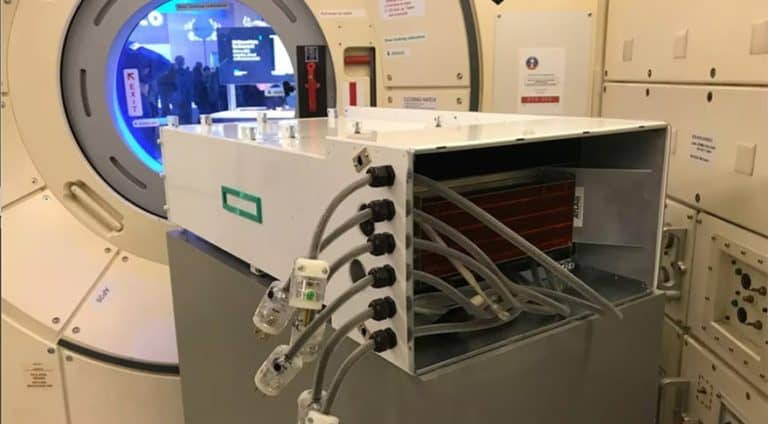HPE has announced that it is sending a second supercomputer to the International Space Station. After the successful pilot with the Spaceborne Computer, NASA and HPE will carry out the project on a full scale.
The system, called Spaceborne Computer-2, will take over tasks normally performed by computers on the ground. This should yield benefits in terms of response time and the amount of data that needs to be sent back to earth.
Moving data processing onto ISS
Examples mentioned by HPE are the real-time monitoring of the astronauts’ physical health and the ability to process medical data on location. The Spaceborne Computer-2 can also connect directly to the many sensors on the International Space Station, such as cameras to study objects on earth and in space. The hardware in the Spaceborne Computer-2 can process and sort the majority part of the images so that only the most important data need be sent back to earth. The data link with ISS is very limited with, so all savings in traffic are helpful.
Hardware
The computers sent to space consist of standard computers that HPE offers in identical form to customers on earth. Two different systems are involved: an HPE Edgeline EL4000 and an HPE ProLiant DL360. The first system consists of an low-power Cascade Lake x86 processor, an low-power Nvidia T4 graphics card, 64GB of memory and four 240GB SSDs. The second system features two low-power x86 processors, 192GB of memory and ten 240GB SSDs. Both systems are equipped with a 10GbE adapter.
Protection from radiation
The system will not receive any special protection from radiation in space. This would add extra mass and add years to the development time. To still offer protection against data errors, HPE will install two identical systems and relies on redundancy. HPE has found that no errors in data output have been caused by radiation with the first Spaceborne Computer.
Launch
NASA plans to send the Spaceborne Computer-2 along with the 15th Northrop Grunman Resupply Mission to Space Station (NG-15). That mission is scheduled for 20 February 2021. The computers will remain on the ISS for 2-3 years. NASA is also considering deploying the system on a possible mission to the Moon or Mars, which would take about the same time.
The first Spaceborne Computer was sent to the ISS in 2017. The aim was to find out whether such a system would survive being launched in rocket and a stay in space with all the associated radiation. The experiment was to last a year, but in the end the computer did not return to Earth until 2019, almost a year later than originally planned.
